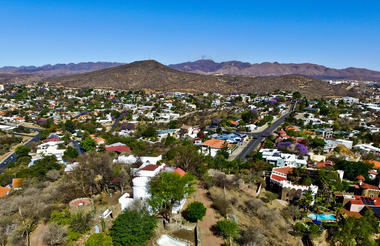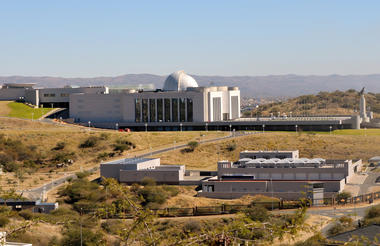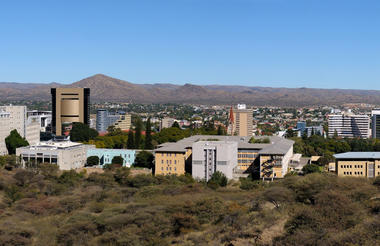Situated in Central Namibia, the cosmopolitan city of Windhoek serves as the capital of the country. It is home to an international airport and a plethora of restaurants, shops, entertainment venues and accommodation options. The city is clean, safe and well-organised, with a colonial legacy that is reflected in its many German eateries and shops, and the widespread use of the German language. Windhoek has an interesting mix of historical architecture and modern buildings, many of which are worth a look, including the Alte Feste an old fort, the 1896 Christuskirche Christ Church, and the more contemporary Supreme Court.
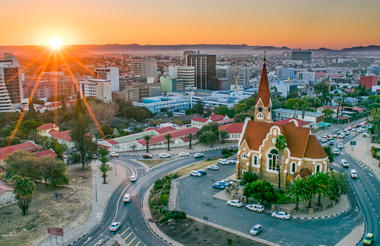
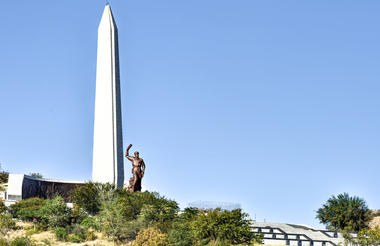
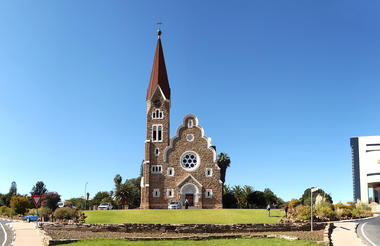
As there is no accommodation at Sossusvlei, visitors to this desert wilderness are likely to end up staying at Sesriem, 65 kilometres away, where camps and lodges serve as a base from which to explore the dunes. Sesriem Canyon, a deep chasm carved through the rocks by water, is a striking natural feature of the area that is best explored on foot. Stony walls rise up sharply on both sides of the canyon, while birds roost in its crags and lizards dart along the ledges. The canyon’s name was coined when early settlers used it as a water source, using six lengths of leather (‘ses riem – six thongs) tied together to lower buckets into the water at the base of canyon.)

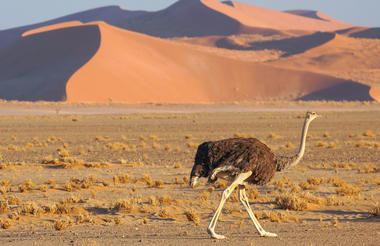
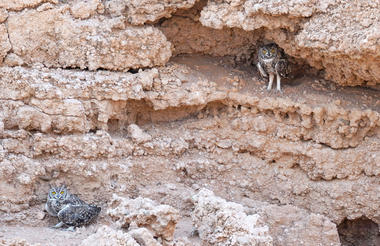
Situated in the Khomas region of Central Namibia, the desert town of Solitaire serves as an oasis in the Namib Desert. The town provides an important stop on the way to the ancient dunes of Sossusvlei, allowing travellers to stock up on essentials as they make their way further into the wilderness. Solitaire also has a small bar and is renowned for its famous apple pie - said to be the best in the country. Enjoy a scenic sundowner with views of the spectacular Namib desert, hike and bike through the unspoilt natural surroundings, or visit the wonderful local Cheetah Sanctuary.
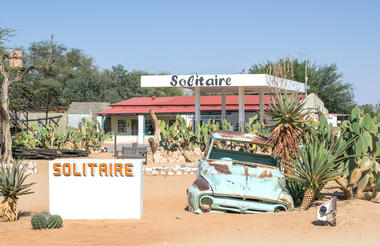
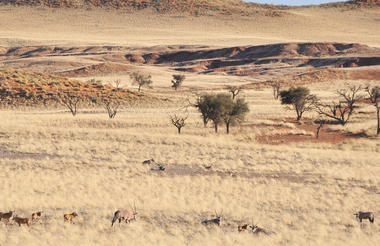
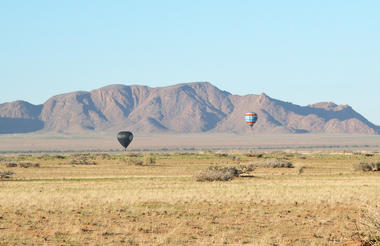
Resting on Namibia's spectacular coastline just south of Swakopmund, Walvis Bay (Whale Bay) is a thriving town, Namibia’s principal harbour and one of the country’s most popular tourist centres. It is known for its natural lagoon, striking orange sand dunes and wealth of outdoor activities. Visitors can enjoy fishing, bird-watching, sailing, sandboarding, swimming, surfing and golf. Located just outside town is Dune 7, one of the largest sand dunes in the world, offering fantastic views from the crest for those with the energy to climb it. Other bucket list items include a trip to the expansive green and pink salt pans dotted with flocks of flamingos, and boat trips to see seals colonies, dolphins and friendly pelicans while enjoying champagne and oysters.
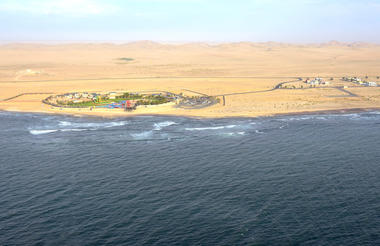

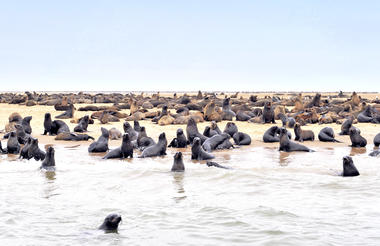
Set in the Kunene Region of northwestern Namibia, Twyfelfontein is a spectacularly scenic area, featuring one of the largest and most important concentrations of rock art in Africa. The name ‘Twyfelfontein’ translates to ‘Fountain of Doubt’, which refers to the perennial spring situated in the impressive Huab Valley flanked by the slopes of a sandstone table mountain. It was this spring that attracted Stone Age hunters over six thousand years ago, and it was during this time that the extensive group of rock engravings and paintings were produced. Visitors can look forward to basing themselves at some wonderfully shady campsites along the Aba-Huab riverbed, while exploring over thirty different sacred ritual sites of the traditional hunter-gatherer communities.
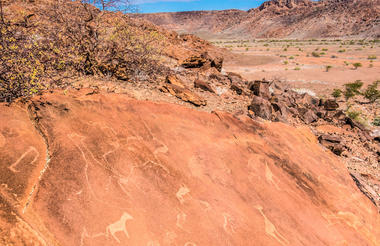
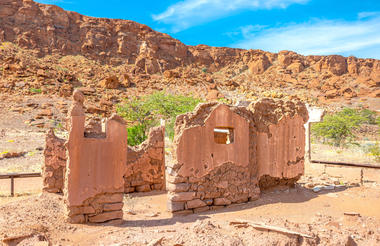
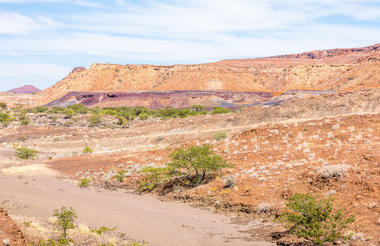
Located just south of the boundary of Etosha National Park in northwestern Namibia, Etosha South makes up the southern region of this wild paradise. The area is comprised of a collection of world class private game reserves. The national park can be accessed via the southern entrance at Andersson’s Gate. Visitors can catch a glimpse of a variety of wildlife including: lion, giraffe, elephant, white and black rhino, and a multitude of plains game. Popular activities include: enjoying an open 4x4 safari with an expert guide, half day or full day drives with the option of a picnic lunch with wine on the full day game drive.
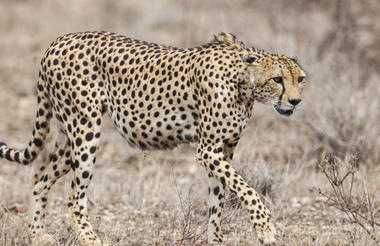

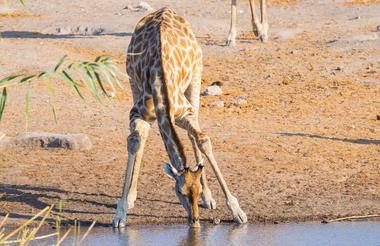
Tsumeb is the largest town in the Oshikoto region and the closest urban centre to the renowned Etosha National Park. It has been dubbed Namibia's 'Gateway to the North'. Tsumeb is also known for the famous Tsumeb Mine, and as having the greatest number of minerals in one place in the world. The region is rich in exquisite semi-precious gemstones which can be seen in their full glory at the Tsumeb Museum. Visitors can stop in at the Arts & Crafts Centre, the Tsumeb Cultural Village, and the Old Mine, which documents Namibia's rich history, before making their way to the famous Etosha natural area. Don't miss the opportunity to take in the town's raw and beautiful scenery in a different way: go skydiving with the Tsumeb Flying Club for a thrill of a lifetime.
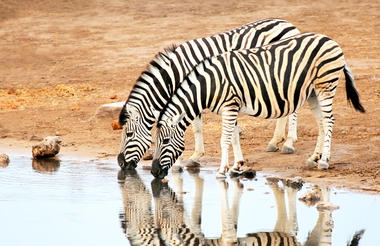
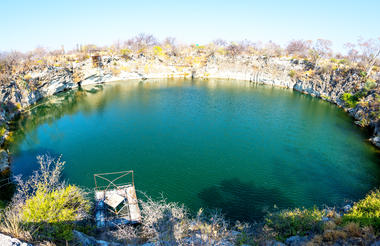
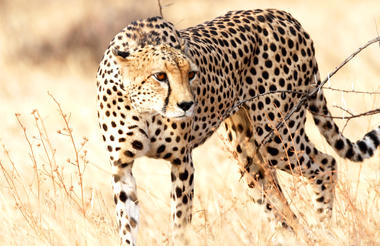
As previously described
